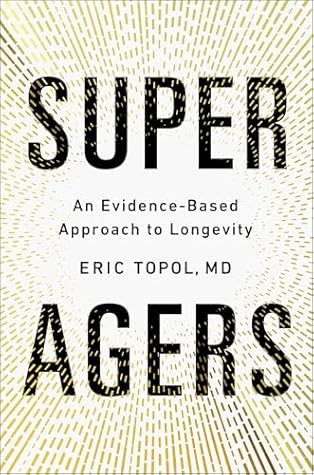More on this book
Kindle Notes & Highlights
by
Eric Topol
Read between
May 24 - May 30, 2025
The research nurse who enrolled and interviewed the participantsI found the Wellderly to be remarkably upbeat people. Many had social interactions such as bridge clubs, dance, and a circle of friends; many were community volunteers. Well into their nineties, some were so busy it was hard to get an appointment to get them enrolled. Each had their own notion for why they were so healthy, despite that some were still smoking cigarettes—up to two packs a day.
Among those age sixty-five and older, 80 percent have two or more chronic diseases, 23 percent have three or more, and about 7 percent have five or more. If you or someone you know has a chronic condition, it is probably one of the big four: diabetes, heart disease, cancer, or some kind of neurodegeneration. Beyond these, chronic lung and kidney disease are high on the list.
The reversal of scarring (fibrosis) that occurs in many organs, previously considered as irrevocable, is being actively pursued in clinical trials with engineered T cells, known as chimeric antigen receptor (CAR-T) treatment, and new drugs, one of which was discovered using generative AI. CAR-T directed against fibrosis was used in mice to restore heart function. It was also used to achieve long-term remission of asthma and in the experimental model of multiple sclerosis to deplete a specific type of T cell population that attacks the body’s cells. This groundbreaking work is not just in
...more
This approach applies to a wide range across type 1 diabetes, multiple sclerosis, and inflammatory bowel disease. Creating drugs and finding vaccines for prevention of Alzheimer’s disease and other neurodegenerative conditions have been the most vexing challenges, supplying a graveyard of hundreds of failed attempts.
First, these foods and beverages contain additives and industrial ingredients. It’s a long list, but here are some of the chemicals you should avoid or limit: coloring agents, sweeteners such as maltodextrin, high-fructose corn syrup, fruit juice concentrates, dextrose, lactose, artificial sweeteners, hydrogenated oils, palm oil, calcium propionate, soy
protein isolate, modified starches such as maltitol, calcium caseinate, hydrolyzed beef gelatin, and emulsifiers such as soy lecithin, xanthan gum, guar gum, and diacetyl tartaric acid esters of mono- and diglycerides.
Previous work has shown that such alteration of the gut microbiome is tied to the abnormal glycemic response. Overall, the data for artificial sweeteners is unfavorable, although it is not nearly as worrisome as high sugar consumption. Certain sweeteners, such as stevia, appear to be less concerning than others.
Much of the current guidance via the National Academies’ Recommended Dietary Allowance (RDA) for protein intake is based on relatively scant evidence, mostly from short-term nitrogen balance studies in young adults, underestimating what is needed in older individuals and longer term.
While increasing your diet up to 1.2 gram/kilograms of protein is reasonable, it’s the leucine-rich animal proteins that should be avoided. High-protein diets are intended to reduce the risk of sarcopenia—age-related loss of muscle mass and strength—which has been unequivocally demonstrated
current recommendations for three servings of dairy per day, with one or two made up of yogurt or cheese.
“Dietary Fat: From Foe to Friend?” by David Ludwig
most plastic sandwich bags have high levels of toxic PFAS.


